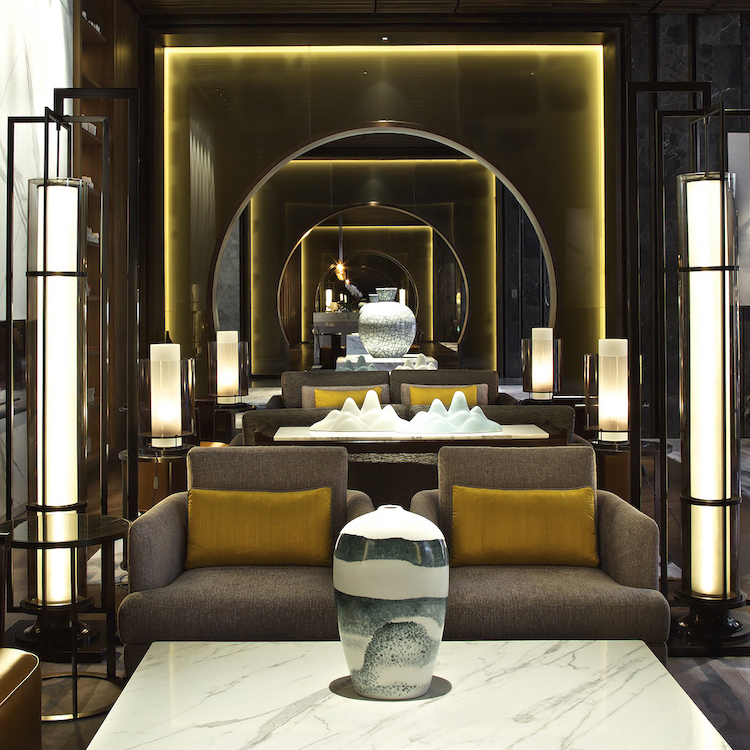BEIJING — Contemporary Chinese artist Zeng Fanzhi, known for his fleshy Hospital and Meat paintings, has teamed up with NUO Hotel Beijing to curate a gorgeous and impressive art collection.
The luxury hotel and its collection contemplates one of China’s most culturally rich eras: the Ming Dynasty (1368-1644) — a time of cultural restoration. No stark white walls here — the hotel’s contemporary elegance with its high ceilings, use of marble and innovative lighting providing visitors a unique experience.
Based on this rich backdrop of history, the hotel traces its style lineage from a veritable ‘who’s who’ of Ming Dynasty heavyweights, starting with intellectual Zhang Dai and Wen Zhenheng (writer), who many consider the father of classic Chinese design and wrote pivotal work Treatise on Superfluous Things. Other notable figures include Wen Zhengming (poet), Xu Wei (calligrapher and painter), Zhu Quan (philosopher) and Zheng He (naval explorer).
In the heart of the hotel, the gleaming lobby is resplendent with a collection of blue and white painted porcelain jars in a nod to Jingdezhen’s famed ancient kilns that supplied fine wares for the emperor and export market. Incidentally, a single vase is the chosen symbol for the NUO luxury brand.
Zeng’s own towering sculpture Le Shan is featured as well as his large panel painting Landscape along the walls.
Made of silver and bronze imported from Basel, Switzerland, the 3-tonne sculpture, entitled “Le Shan”, is Mr. Zeng’s homage to a line from one of the essays of renowned Ming Dynasty-era intellectual and historian Zhang Dai who, in recalling blissful memories spent with his beloved grandfather in Shaoxing, China, said: “The door opens on a view of mountains; the window opens on a view of water.
Each guest room also features a nature scene from the artist that “originated from paintings on paper”.
About NUO Hotel Beijing: Owned by the Beijing Tourism Group (BTG), NUO Hotel Beijing opened its doors in June 2015. Inspired by China’s rich heritage, NUO Hotels’ core philosophies, as fully exemplified in the group’s properties, are encapsulated by four key brand pillars: Chinese, Luxury, Contemporary and Green.With key interiors developed by Hirsch Bedner Associates, the hotel has 438 guest rooms and suites and an Executive Club Lounge. The five-star hotel also boasts international dining options, a holistic spa utilising a traditional Chinese medicine text and a tea house featuring bespoke tea collections. The hotel is located in the Chaoyang District, a quick five-minute taxi ride to Beijing’s famed 798 Art District, a decommissioned industrial complex that is one of the main hubs of the contemporary art scene in Beijing.
Do you love or loathe this collection of contemporary ceramic art and contemporary ceramics? Let us know in the comments.















Add your valued opinion to this post.